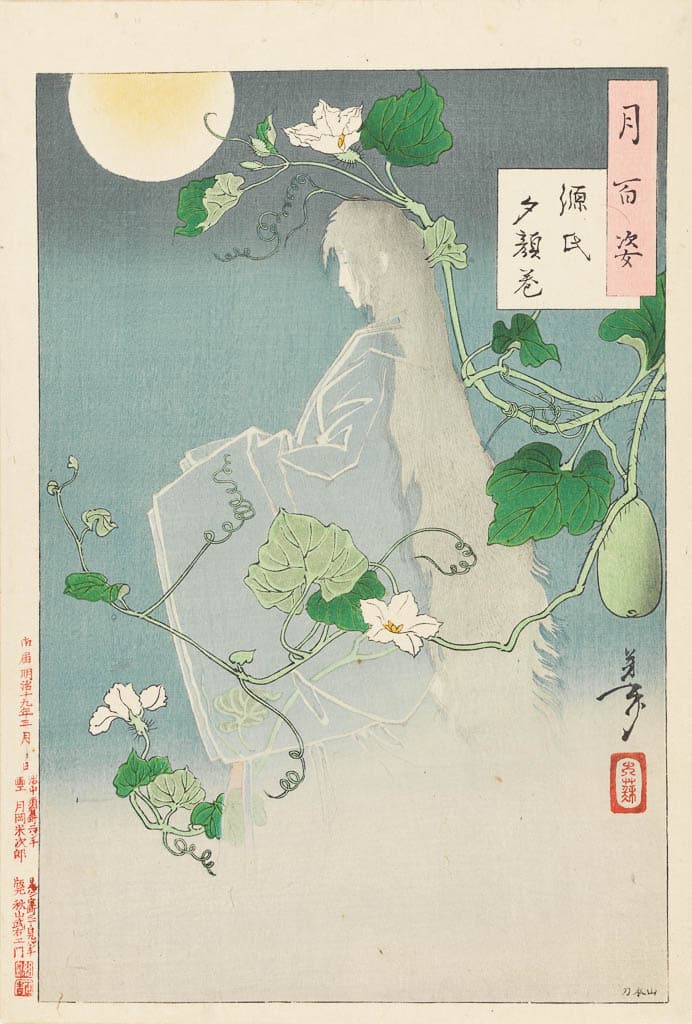
Genji yûgao no maki
Colour print from woodblocks, with blind embossing (karazuri) and textile printing (nunomezuri).
Ôban format.
Block-cutter: Yamamoto (Yamamoto Shinji).
Publisher: Akiyama Buemon. First edition 03/1886
Keyes 478-28. Stevenson 29
From the series One Hundred Aspects of the Moon (Tsuki hyakkei) published in 1885-92.
This diaphonous figure is the ghost of the most mysterious of Prince Genji’s lovers in The Tale of Genji, the 11th-century classic by Murasaki Shikibu, who was depicted in another print in this series. In Chapter 4 of the novel, Genji is on the way to visit his old nurse when he is attracted by the white flowers of a gourd overrunning the garden of a dilapidated house. He asks a servant to fetch a bloom and it is returned on a fan inscribed with a poem referring to his ‘evening face’, the literal meaning of yûgao, the name of the flower (Lagenaria siceraria). He courts the mysterious author of the poem, and takes her to a nearby villa, where she is visited in the middle of the night by the jealous spirit of one of Genji’s lovers; she breaks into a fever and within hours she is dead. Genji is overcome with grief and years later still longed for a further glimpse of the woman who faded as quickly as the white flowers in her garden.
The print shows her ghost floating through her garden on the night of a full moon: yûgao was also known as ‘moonflower’, thus linking the subject to the theme of the series. Her lips are blue, a convention for the depiction of ghosts and corpses. Blind embossing is used to give form to the white petals of the flowers.
Given by The Friends of the Fitzwilliam Museum, 2004
P.76-2004




